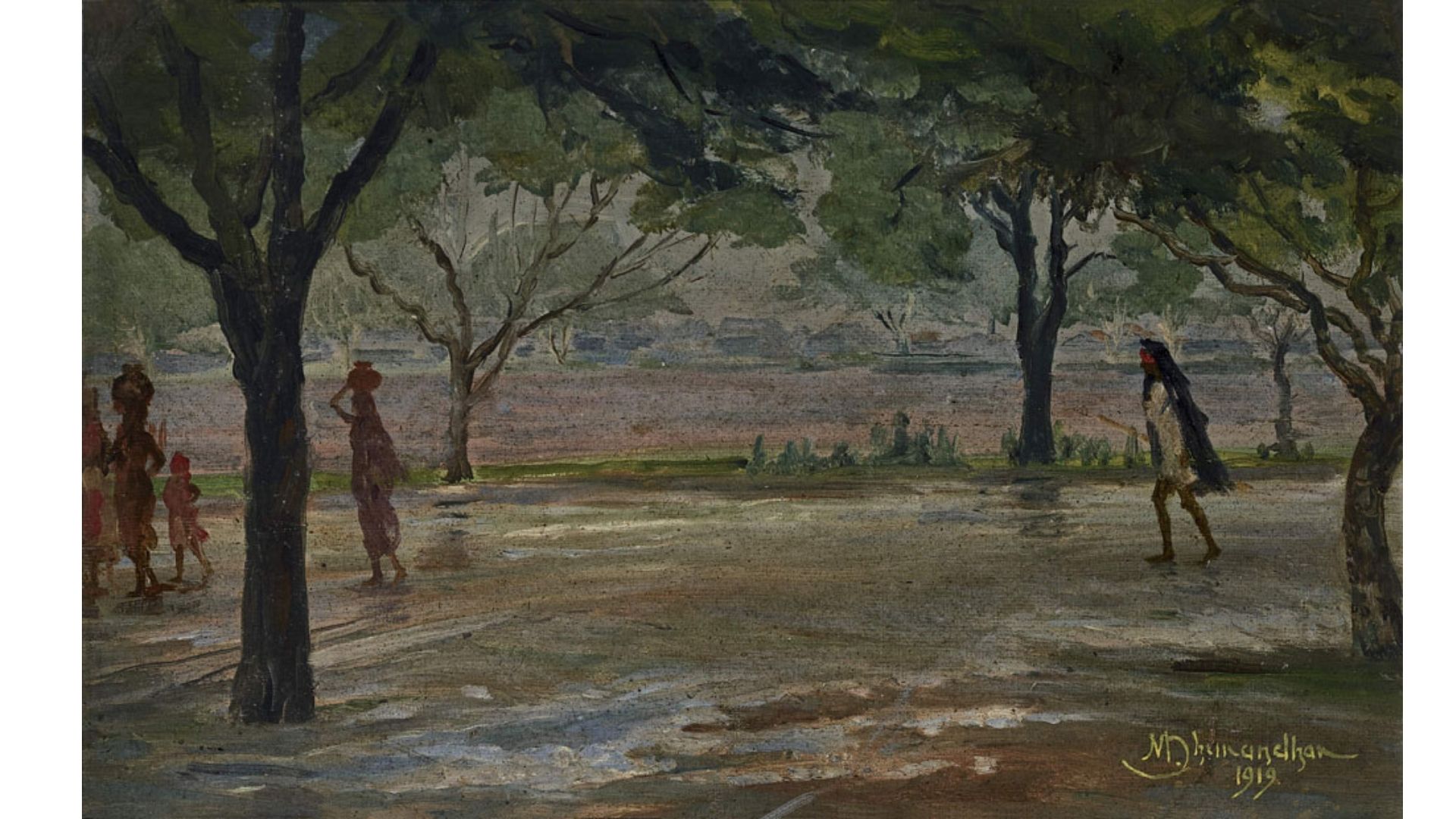One of the most revered academic realist artists of early 20th century India, old master M. V. Dhurandhar is little known today among the masses.
However, his contribution to the development of modern Indian art can never be overstated. With his extraordinary works, he continues to capture the hearts of art lovers and remains sought after among the collectors of traditional Indian art. Born in 1867 in Kolhapur, he received his art training from Sir J J School of Art where he was highly encouraged by the principal John Griffiths. His famous painting, ‘Women At Work’, got him a British Government Award in 1892, while still a student. Yet another black and white illustration, ‘Marriage Ceremony’ won him a gold medal in 1908. He also won a gold medal from the Bombay Art Society for his oil work ‘Do You Come Lakshmi?’ In 1895.
Working in a range of mediums and styles including portraits, landscapes, figurative compositions, watercolor works, as well as murals. He came to be especially appreciated for his paintings depicting Indian historical and mythological subjects that he laced with a uniquely his own romanticism. Over the course of his oeuvre, he became particularly known for imbibing his work with an aura of mystical realism in an academic style.
Upon completion of his course, M V Dhurandhar became a faculty member of Sir J J School of Arts and eventually was appointed as the first Indian director of the institution. During the course of his career, M V Dhurandhar created thousands of paintings and illustrations and commissioned several commercial projects. He illustrated Otto Rothfeld’s book Women Of India in 1920, Percival and Olivia Strip’s The Peoples Of India in 1944, and postcards depicting India’s various occupations. A multifaceted artist, M V Dhurandhar was also an accomplished writer. On the occasion of his 155th birth anniversary, here are five works that truly celebrate the legacy of M V Dhurandhar.

This beautiful untitled painting was executed in the year 1924 and depicts Lord Shiva performing the Tāṇḍava. The canvas includes other deities including Laxmi and Vishnu as well as infant Ganesha, who is joyously observing him. One can see the goddess of knowledge Saraswati as well as several other mythological characters in the painting. This painting appeared in an auction for the first time in December 2022.

This painting showcases a battle scene with Lord Krishna at the forefront, defiantly wielding a sword as his opponent lies unconscious in front of him. The artist has beautifully played with light, bathing Krishna in its radiance, as if symbolically signifying his victory. The battle unfolding in the background adds a layer of intense depth and realism to the overall composition of the painting.

Executed in 1919 in an impressionistic style, the painting depicts villagers carrying water back home with the figure of a wandering ascetic or the village shaman following them into the village. The landscape stretches into the distance, metamorphosing into fields and hills in the distance. The harmonious balance of colors renders this image with a feeling of calm as one delves into the serenity of the scene unfolding on the canvas.

This painting titled ‘Playing Dilruba’ is a work from the year 1927 and depicts a female musician in the middle of her recital. Executed with colour wash and graphite on paper, this painting is now in the collection of the National Gallery of Modern Art.

























